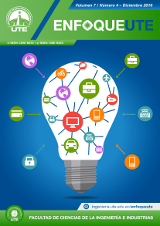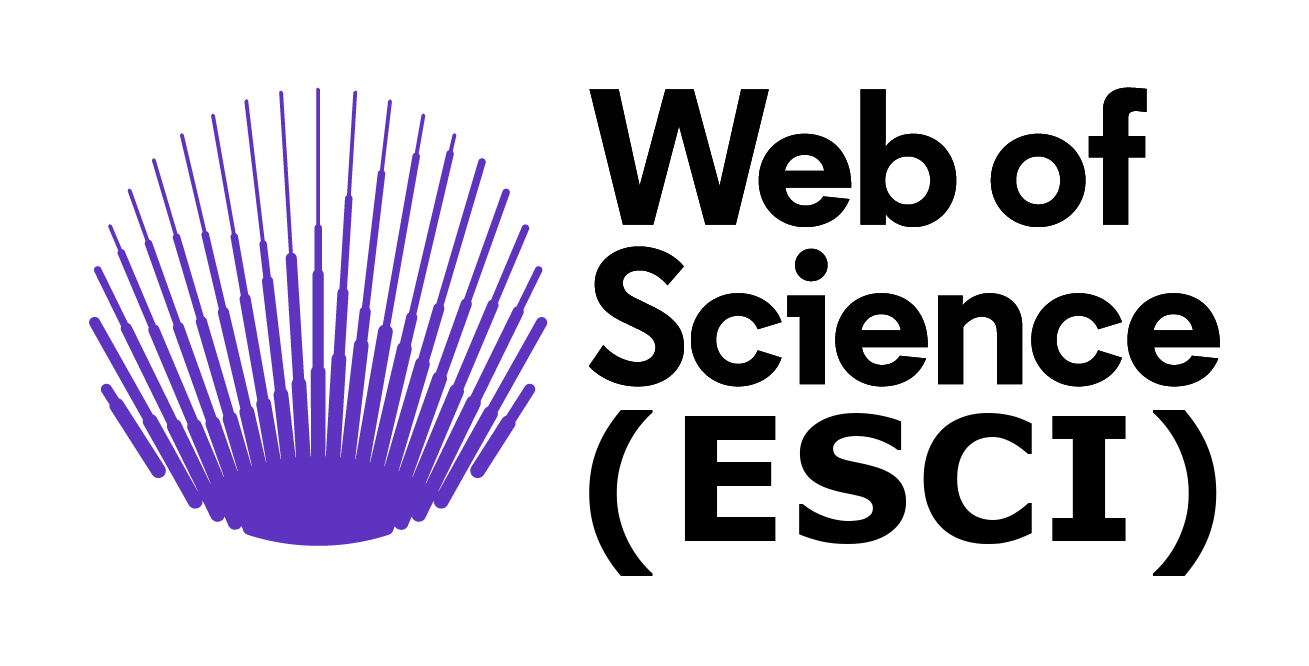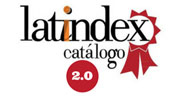Interacción basada en gestos de dibujos para complementar el proceso de enseñanza-aprendizaje
DOI:
https://doi.org/10.29019/enfoqueute.v7n4.110Palabras clave:
Gestos manuales, interacción sin contacto, tecnología de la información en educación, Interacción Humano-ComputadorResumen
La interacción basada en gestos manuales ha experimentado notables avances en los últimos años. Su utilidad ha sido verificada en diferentes ámbitos, particularmente en el educativo, donde puede contribuir a mejorar la calidad de la educación. Sin embargo, aún existen temas que han recibido poca atención, tales como el uso de gestos de dibujos realizados en el aire con la mano. Por este motivo, este artículo analiza la viabilidad de emplear este tipo de gestos con fines educativos. Para el efecto, se llevó a cabo un estudio en el cual los participantes interactuaron con la aplicación desarrollada usando varios gestos de dibujos. Los resultados cuantitativos y cualitativos obtenidos confirman la validez de la propuesta. Específicamente, el rendimiento de los participantes fue aceptable de acuerdo a los valores de las métricas utilizadas. Además, los participantes manifestaron que la propuesta es interesante y entretenida. Como consecuencia, el uso de aplicaciones de este tipo, en el aula o en el hogar, podría contribuir a incrementar el interés de los estudiantes en la asignatura correspondiente, lo que debería conducir a obtener mejores resultados.
Metrics
Descargas
Citas
Akazawa, N., Yawata, K., Takeda, D., Nakayama, Y., Kakuda, H., & Suzuki, M. (2014b). A Playing and Learning Support System Using Kinect for Romaji. Proc. 3rd Global Conference on Consumer Electronics (pp. 345-349). IEEE.
Anthony, L., & Wobbrock, J. O. (2010). A Lightweight Multistroke Recognizer for User Interface Prototypes. Proc. Graphics Interface 2010 (pp. 245-252). Canadian Information Processing Society.
Baudel, T., & Beaudouin-Lafon, M. (1993). Charade: remote control of objects using free-hand gestures. Communications of the ACM, 36(7), 28-35.
Beekes, W. (2006). The 'millionaire' method for encouraging participation. Active learning in higher education, 7(1), 25-36.
Bennett, S., Maton, K., & Kervin, L. (2008). The 'digital natives' debate: A critical review of the evidence. British journal of educational technology, 39(5), 775-786.
Buchmann, V., Violich, S., Billinghurst, M., & Cockburn, A. (2004). FingARtips – Gesture Based Direct Manipulation in Augmented Reality. Proc. 2nd international conference on Computer graphics and interactive techniques in Australasia and South East Asia (pp. 212-221). ACM.
Castellucci, S. J., & MacKenzie, I. S. (2008). Graffiti vs. unistrokes: an empirical comparison. Proc. SIGCHI Conference on Human Factors in Computing Systems (pp. 305-308). ACM.
Connolly, T. M., Boyle, E. A., MacArthur, E., Hainey, T., & Boyle, J. M. (2012). A systematic literature review of empirical evidence on computer games and serious games. Computers & Education, 59(2), 661-686.
Erazo, O., & Pico, R. (2014). Interfaces de usuario basadas en gestos manuales sin contacto para la sala de clases: una revisión bibliográfica. Enfoque UTE, 5(4), 34-53.
Fang, B. (2009). From distraction to engagement: Wireless devices in the classroom. Educause Quarterly, 32(4), 4-9.
Fried, C. B. (2008). In-class laptop use and its effects on student learning. Computers & Education, 50(3), 906-914.
Giovanni, S., Choi, Y. C., Huang, J., Khoo, E. T., & Yin, K. (2012). Virtual Try-On Using Kinect and HD Camera. Proc. International Conference on Motion in Games (pp. 55-65). Springer Berlin Heidelberg.
González-Jorge, H., Riveiro, B., Vázquez-Fernández, E., Martínez-Sánchez, J., & Arias, P. (2013). Metrological evaluation of Microsoft Kinect and Asus Xtion sensors. Measurement, 46(6), 1800-1806.
Groff, J., & Mouza, C. (2008). A Framework for Addressing Challenges to Classroom Technology Use. AACe Journal, 16(1), 21-46.
Holzinger, A., Softic, S., Stickel, C., Ebner, M., Debevc, M., & Hu, B. (2010). Nintendo Wii remote controller in higher education: development and evaluation of a demonstrator kit for e-teaching. Computing and Informatics, 29(4), 601-615.
Homer, B., Kinzer, C., Plass, J., Letournear, S., Hoffman, D., Bromley, M., Hayward, E., Turkay, H., & Kornak, Y. (2014). Moved to learn: The effects of interactivity in a Kinect-based literacy game for beginning readers. Computers & Education, 74, 37-49.
Hsu, H. M. (2011). The potential of kinect in education. International Journal of Information and Education Technology, 1(5), 365-370.
Jagodziński, P., & Wolski, R. (2015). Assessment of Application Technology of Natural User Interfaces in the Creation of a Virtual Chemical Laboratory. Journal of Science Education and Technology, 24(1), 16-28.
Johnson, K., Pavleas, J., & Chang, J. (2013). Kinecting to Mathematics through Embodied Interactions. Computer, 46(10), 101-104.
Kandroudi, M., & Bratitsis, T. (2012). Exploring the educational perspectives of XBOX kinect based video games. Proc. ECGBL (pp. 219-227).
Kim, J. H., Lim, J. H., & Moon, S. H. (2012). The Effect of Visual Feedback on One-hand Gesture Performance in Vision-based Gesture Recognition System. Journal of the Ergonomics Society of Korea, 31(4), 551-556.
Kühnel, C., Westermann, T., Hemmert, F., Kratz, S., Müller, A., & Möller, S. (2011, October). I’m home: Defining and evaluating a gesture set for smart-home control. International Journal of Human-Computer Studies, 69(11), 693-704.
Lee, W. J., Huang, C. W., Wu, C. J., Huang, S. T., & Chen, G. D. (2012). The Effects of Using Embodied Interactions to Improve Learning Performance. Proc. 12th International Conference on Advanced Learning Technologies (pp. 557-559). IEEE.
Lui, A. K., Ng, V. S., & Chan, C. H. (2013). Gesture-Based Interaction for Seamless Coordination of Presentation Aides in Lecture Streaming. Proc. International Conference on ICT in Teaching and Learning (pp. 108-119). Springer Berlin Heidelberg.
Mehler, A., Lücking, A., & Abrami, G. (2014). WikiNect: Image schemata as a basis of gestural writing for kinetic museum wikis. Universal Access in the Information Society, 14(3), 333-349.
Meng, M., Fallavollita, P., Blum, T., Eck, U., Sandor, C., Weidert, S., Waschke, J., & Navab, N. (2013). Kinect for Interactive AR Anatomy Learning. Proc. International Symposium on Mixed and Augmented Reality (pp. 277-278). IEEE.
Nandi, S., Deb, S., & Sinha, M. (2016). Enhanced Understanding of Education Content Using 3D Depth Vision. Proc. Information Systems Design and Intelligent Applications (pp. 483-490). Springer India.
Panger, G. (2012). Kinect in the Kitchen: Testing Depth Camera Interactions in Practical Home Environments. CHI'12 Extended Abstracts on Human Factors in Computing Systems (pp. 1985-1990). ACM, (pp. 1985-1990).
Piumsomboon, T., Clark, A., Billinghurst, M., & Cockburn, A. (2013). User-Defined Gestures for Augmented Reality. Proc. IFIP Conference on Human-Computer Interaction (pp. 282-299). Springer Berlin Heidelberg.
Plaumann, K., Lehr, D., & Rukzio, E. (2016). Who Has the Force?: Solving Conflicts for Multi User Mid-Air Gestures for TVs. Proc. International Conference on Interactive Experiences for TV and Online Video (pp. 25-29). ACM.
Prenksy, M. (2001). Digital natives, digital immigrants. On the Horizon, 9(5), 1-6.
Ren, G., & O'Neill, E. (2013). 3D selection with freehand gesture. Computers & Graphics, 37(3), 101-120.
Senin, P. (December 2008). Dynamic time warping algorithm review. Honolulu, USA: Information and Computer Science Department University of Hawaii at Manoa Honolulu.
Şimşek, S., & Durdu, P. O. (2014). Developing an Interactive Learning Environment with Kinect. Proc. International Conference on Human-Computer Interaction (pp. 150-155). Springer International Publishing.
Susi, T., Johannesson, M., & Backlund, P. (2007). Serious Games: An Overview. DiVA.
Tinio, V. L. (2003). ICT in Education. E-Primers. UNDP, New York.
Wachs, J. P., Kölsch, M., Stern, H., & Edan, Y. (2011). Vision-Based Hand-Gesture Applications. Communications of the ACM, 54(2), 60-71.
Publicado
Cómo citar
Número
Sección
Los artículos e investigaciones publicadas por la Universidad UTE, se realizan en régimen de Acceso Abierto [Open Access] en formato electrónico. Al enviar un artículo a cualquiera de las revistas científicas de la Universidad UTE, el o los autores aceptan estas condiciones.
La UTE aplica la licencia Creative Commons Attribution (CC-BY) a los artículos de sus revistas científicas. En virtud de esta licencia de acceso abierto, como autor usted acuerda que cualquier persona puede reutilizar su artículo en su totalidad o en parte para cualquier propósito, de forma gratuita, incluso para fines comerciales. Cualquiera puede copiar, distribuir o reutilizar el contenido siempre y cuando el autor y la fuente original estén correctamente citados. Esto facilita la libertad de reutilización y también asegura que el contenido pueda ser extraído sin barreras para necesidades de investigación.
Esta obra está bajo una Creative Commons Attribution 3.0 International (CC BY 3.0).
Además, la Revista Enfoque UTE garantiza y declara que los autores conservan siempre todos los derechos de autor y de publicación de sus obras originales sin restricciones [© Los Autores]. El reconocimiento (BY) permite cualquier explotación de la obra, incluyendo una finalidad comercial, así como la creación de obras derivadas, la distribución de las cuales también está permitida sin ninguna restricción.























 Enfoque UTE - Facultad de Ciencias de la Ingeniería e Industrias - Universidad UTE
Enfoque UTE - Facultad de Ciencias de la Ingeniería e Industrias - Universidad UTE